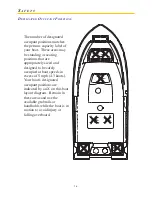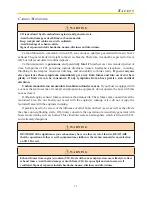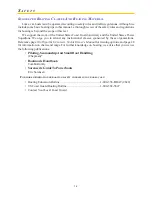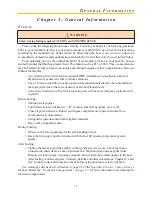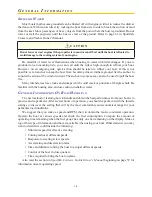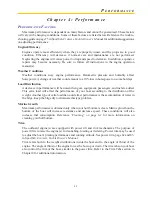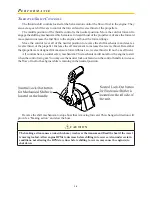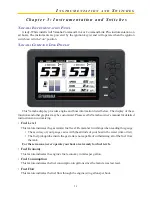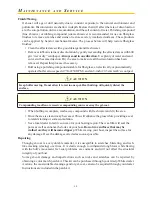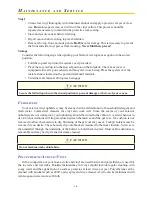
3-3
G
e n e r a l
I
n f o r m a T I o n
a
nChorInG
Some factors that determine the size and type of anchor most suitable for your boat include the
size of your boat and the type of lake, sea or river bottom in your boating area.
Sportfish, Cruisers,
Yachts Owner’s Manual
has a list of tips concerning anchoring starting on page 56.
N O T I C E
It is illegal to tie your boat to navigational aids such as buoys and markers.
WA R N I N G
Never anchor off the stern of the boat especially in strong winds or currents. The weight of the
stern and flat surface to the seas can easily cause water to enter over the transom and swamp the
boat.
T
owInG
In the event of a mishap or power loss you may need to tow a boat or be towed. You should not
tow a boat larger than your own. Always use safety and good judgment when towing. Never tow a
boat if you are not equipped with the proper lines. Passengers should never grasp a towline. It
should be secured to the boat. See page 39 in
Sportfish, Cruisers, Yachts Owner’s Manual
.
Before towing a boat, make a bridle and tie it securely to the pad eyes on the transom with
enough slack to clear the engines. Pad the line wherever it comes into contact with the boat to
prevent chafing. Attach a tow line to the bridle so that it can slide from side to side to prevent too
much pressure on a single pad eye. The tow line should then be attached to the bow eye or to a bridle
on the towed boat. The tow line should be a minimum of twice the length of the towing boat, the
longer the better. Do not try to run in too close when passing the towline to the other boat. Send
either a light line or attach the towline to a life preserver to be pulled in. Be aware of the other boat’s
propeller.
The towed boat should always have someone at the wheel since the boat may swing off course.
Start the tow off slowly; a steady pull at a moderate speed should be used. It is important to keep the
slack out of the propeller area. Watch the action of the towing boat. If excessive slack develops in
the towline and contact is obvious, turn in either direction to avoid hitting the stern.
WA R N I N G
As a precaution, passengers on both boats should stay clear of the towline; lines under stress could
snap and fly in either direction causing injury.
Summary of Contents for 181 CE 2017
Page 1: ......
Page 3: ......
Page 7: ...T a b l e o f C o n t e n t s ...
Page 11: ...1 4 W e l c o m e ...
Page 25: ...3 6 G e n e r a l I n f o r m a ti o n ...
Page 33: ...5 4 I n s t r u m e n t a ti o n a n d S w itc h e s ...
Page 43: ...6 10 M a i n t e n a n c e a n d S e r v ic e ...
Page 54: ...8 7 Fisherman 180 Safety Labels and Location ...
Page 55: ...8 8 Fisherman 180 ...










